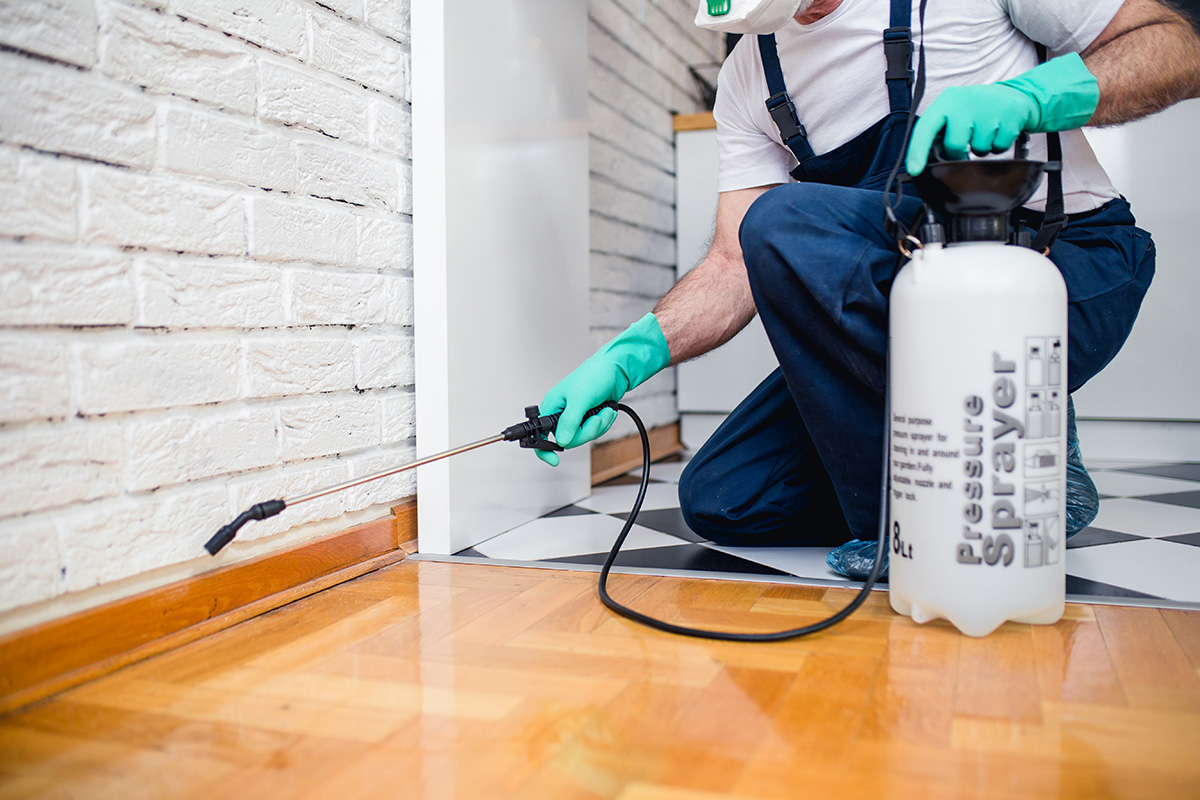Effective A1 Bed Bug Treatment in Charlotte - Safe and Proven Methods
Effective A1 Bed Bug Treatment in Charlotte - Safe and Proven Methods
Blog Article
Bed Bug Therapy Breakdown: Contrasting Chemical Vs. Non-Chemical Solutions
In the realm of pest control, especially when handling the persistent concern of bed insects, the option between chemical and non-chemical therapy remedies can be a critical one. Both approaches use unique advantages and drawbacks, affecting elements such as performance, security considerations, and general price. By taking a look at the nuanced details of each approach, a clearer understanding of which course to seek in addressing a bed bug infestation can be attained.
Efficiency of Chemical Treatments
Chemical therapies for bed pest infestations have been extensively acknowledged for their potent and fast effectiveness in eliminating these pests. When taking into consideration the efficiency of chemical treatments, it is critical to recognize that they can offer a fast and detailed service to a bed insect trouble. Expert pest control experts frequently count on insecticides to target bed bugs at various stages of their life cycle, including fairies, eggs, and grownups. These chemicals typically function by disrupting the bed insects' nerve system, leading to paralysis and ultimate fatality.
Moreover, chemical therapies have the benefit of using recurring impacts, implying that they can remain to eliminate bed bugs even after the first application. This recurring activity is specifically helpful in combating any type of potential re-infestations. Furthermore, the rapid activity of chemical therapies can bring relief to individuals encountering extreme bed pest problems, allowing them to restore control of their space swiftly.
Safety Worry About Chemical Solutions
When utilizing chemical remedies for bed bug therapy is guaranteeing the safety and security of residents and the environment,One essential facet that calls for careful factor to consider. While chemical treatments can be efficient in removing bed insects, they might present threats if not managed appropriately. One of the primary security interest in chemical solutions is the possible damage they can trigger to human health and wellness. Exposure to particular chemicals made use of in bed insect therapies can lead to respiratory concerns, skin inflammation, or various other damaging reactions, specifically in people with pre-existing conditions or level of sensitivities. Additionally, inappropriate application or dosage of chemical pesticides can cause harmful residues sticking around in the cured location, posing long-term wellness threats to passengers.
Furthermore, the ecological effect of chemical options is one more significant factor to consider. Some chemicals used in bed insect therapies may be unsafe to helpful bugs, wild animals, and ecosystems if they leach into the dirt or water systems. It is vital to use chemical therapies judiciously, complying with security guidelines, and taking into consideration much less harmful options to reduce these dangers and guarantee the safe like it and effective monitoring of bed insect problems.
Advantages of Non-Chemical Methods
Thinking about the possible security concerns and ecological effect linked with chemical options for bed bug therapy, checking out non-chemical approaches provides an appealing alternative with numerous distinct advantages. Non-chemical therapies are eco friendly, as they do not contribute to air or water air pollution, making them a sustainable choice for parasite control.
Furthermore, non-chemical solutions can be effective in targeting bed bugs, consisting of hard-to-reach locations where chemical therapies might not pass through - A1 charlotte pest control companies. Approaches such as heat therapy, vacuuming, steam cleaning, and mattress coverings provide detailed eradication without the use of unsafe chemicals.
Limitations of Non-Chemical Treatments

Furthermore, non-chemical therapies frequently call for numerous applications to attain successful obliteration. This can be time-consuming and may not constantly assure complete removal of all bed pests and their eggs, particularly in hard-to-reach or concealed locations.
Additionally, the success of non-chemical therapies greatly depends on correct implementation and thoroughness, which can be challenging for individuals without specialist know-how. Inadequate application of non-chemical methods may lead to insufficient removal, resulting in relentless invasions and the demand for added therapies.
Consequently, while non-chemical treatments have their benefits, it is necessary to recognize these constraints and consider them when figuring out the most efficient strategy for handling bed bug problems.
Price Comparison: Chemical Vs. Non-Chemical Options
Offered the restrictions linked with non-chemical treatments, an important facet to review in the context of bed insect monitoring is the expense comparison in between chemical and non-chemical choices. In comparison, non-chemical therapies like heat treatment or steam can be a lot more costly, with costs varying from $1,000 to $6,000 for a whole home. While the initial expense of chemical therapies might appear lower, numerous therapies might be called for to fully eliminate the problem, potentially increasing the overall view publisher site cost.
Conclusion

Thinking about the possible safety concerns and environmental effect associated with chemical remedies for bed bug treatment, exploring non-chemical techniques offers an encouraging alternative with numerous distinct benefits.Provided the constraints associated with non-chemical treatments, a crucial aspect to evaluate in the context of bed insect monitoring is the cost contrast between chemical and non-chemical options. In comparison, non-chemical treatments like warm therapy or steam can be much more pricey, with costs varying from $1,000 to $6,000 for a whole home. While the initial expense of chemical therapies might seem lower, multiple therapies may be required to totally get rid of the problem, possibly increasing the general cost.In verdict, when contrasting chemical and non-chemical bed pest therapy choices, it is essential to consider effectiveness, safety, benefits, constraints, and cost.
Report this page